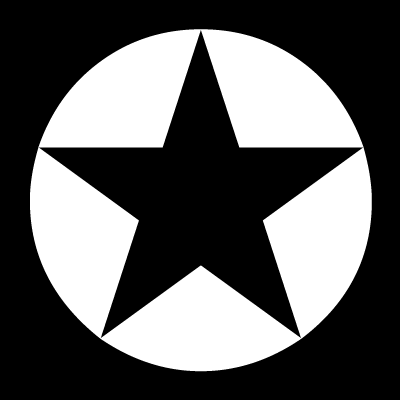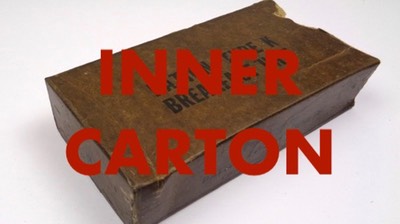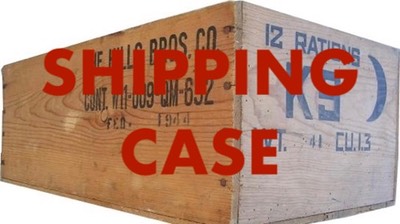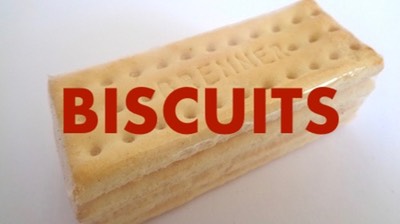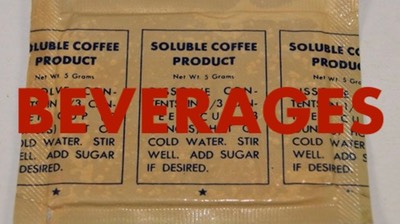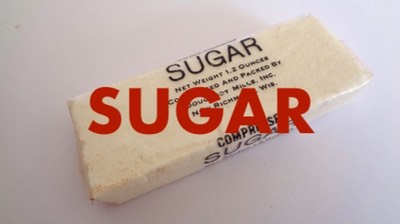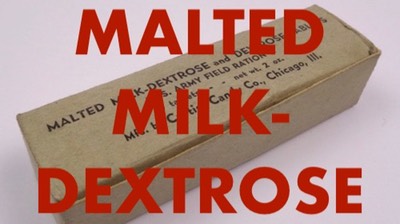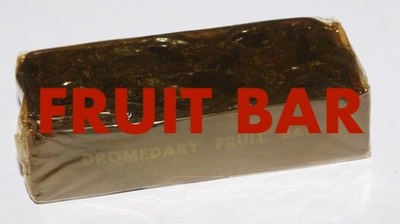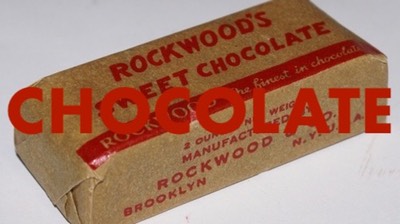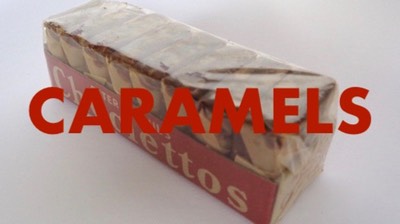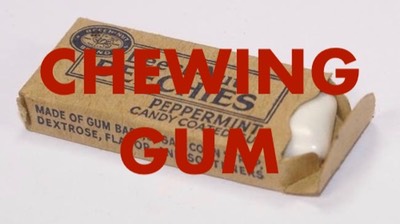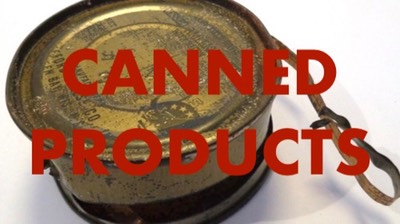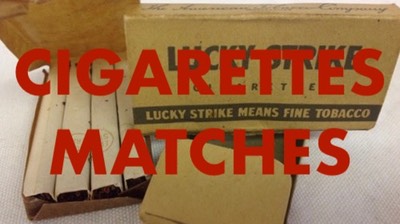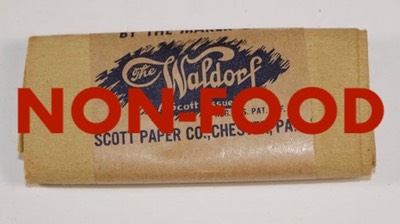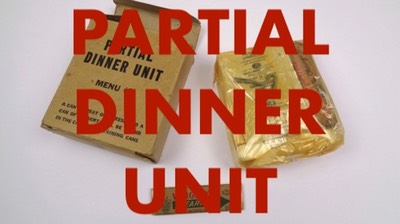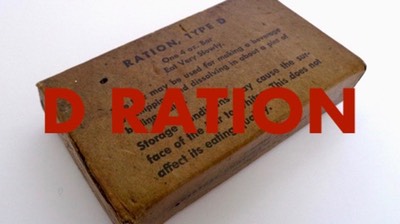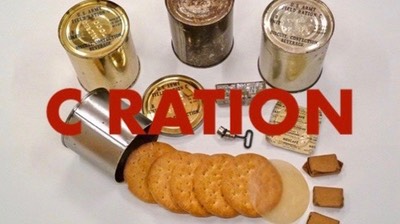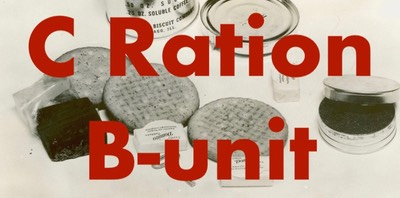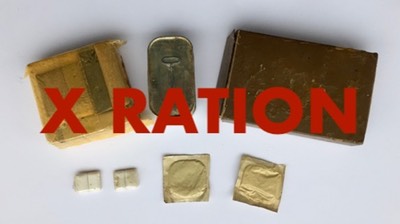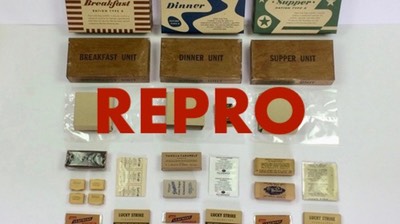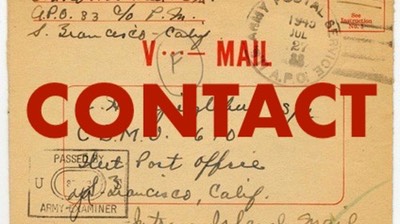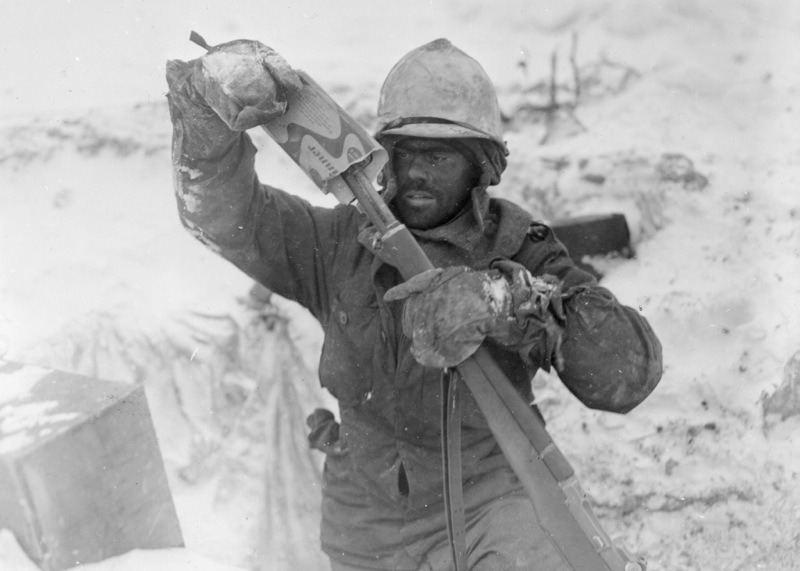
The use of the new colors, instead of olive drab, was adopted in order to stimulate interest in the food and make it appear more attractive to the soldier.
First of all, it must be explained that the Quartermaster Corps makes a difference between packaging and packing.
Placing identical items of the actual foodstuff together in a cardboard box, a paper wrapping or sealed in cellophane is called "packaging".
Although the components are packed together, they are considered a "package".
Placing several (different) packages together in a container is called "packing".
This means that the induvidual packages were packed together in the Breakfast, Dinner or Supper units. These in turn were packages that were packed in shipping crates. It's not confusing at all, right?
From a May 1943 circular: The following distinction has been made between packaging and packing. "Packaging" contains the product itself, is often designed along with the product, and is usually accomplished at the source or production point. "Packing" has to do with the exterior container or shipping container. It may be accomplished at the source or production point, or in depots, or in the field, as in the case of orginazational equipment.
The Quartermaster Corps contracted companies to act as a prime contractor. These companies had previous experience in handling and packing foodstuffs, had ample space and manpower, and the special machines for processing (like waterproofing and closing) the inner and outer cartons.
These prime contractors ordered the contents for the K Rations from approved subcontractors and packed them together in the seperate units. When the units were ready they were packed for shipment, twelve complete rations in a case.
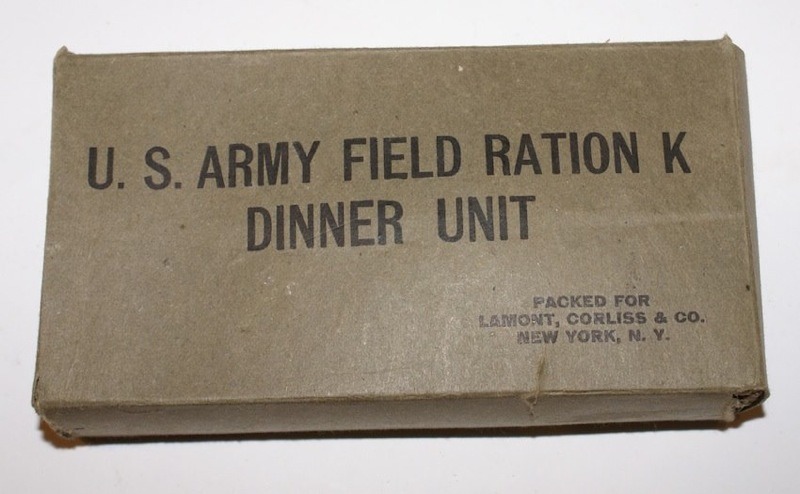
Apparently Lamont, Corliss & Company didn't packed the ration themselves.
Known prime contractors are:
- Lamont, Corliss & Company
- The Hills Brothers Company
- Beech-Nut Packing Company
- Wm Wrigley Jr. Company
- Patten Food Products
- H. J. Heinz Company
- General Foods Corporation
- Kellogg Company
- American Chicle Company
- Hiram Walker & Sons Incorporated
- Campbell Soup Company
- Phillips Packing Company
- The Cracker Jack Company
- Doughboy Mills, Incorporated
- Chas. A. Brewer and Sons
Some companies acted as prime contractor during the whole war, others only early or later in the war, or just for one production run.
The components of the K Ration are enclosed in a carton. This carton is impregnated with a synthetic wax compound in order to weather- and gasproof the packaging. To prevent the boxes sticking together when packed in a box or crate, the individual waxed cartons are placed inside a snugly fitting box: the outer carton.

A 1942 Signal Corps photo showing the new K Ration that is packed in a single wax coated carton. In hot climate these would stick together.
Each unit is boldly printed with "U.S. ARMY FIELD RATION K", with "BREAKFAST UNIT", "DINNER UNIT" or "SUPPER UNIT" underneath. The printing is on one or both main panels of the outer carton.
A letter "B", "D" or "S" is usually printed on one or both ends to identify the unit when the rations were placed up right in a shipping box.
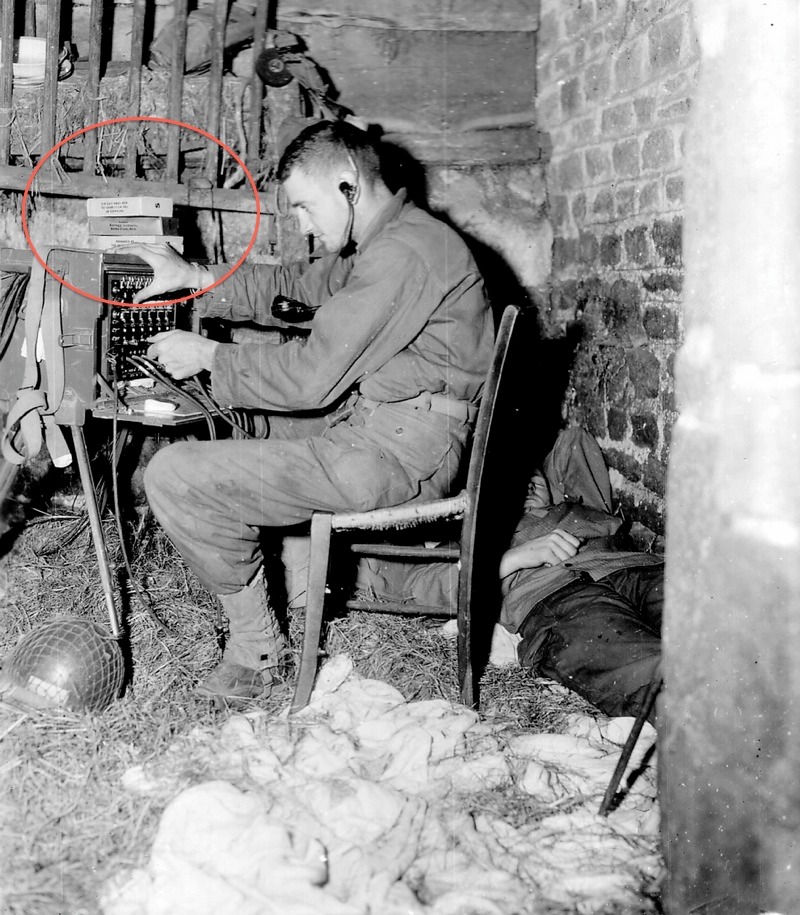
A telephone operator in Normandy has stacked three K Rations units (circled in red) on top of his switchboard.
Due to specific changes in the design of the labels on the outer cartons I divided them in four specific types (with two sub types). These are not official typifications, but are my own for easy reference.
Type I: Only the nomenclature "U.S. Army Field Ration K" with type of unit is printed on the box. (late 1942 production)
Early experimental procurement of the K Rations had its nomenclature and the name and address of the packing company together with a list of its contents printed on one main panel.
With the contents continuously changing due to its (early) development, it was impossible to match its list of contents every procurement. It was decided that the carton would only read its nomenclature and packaging company's name and address.
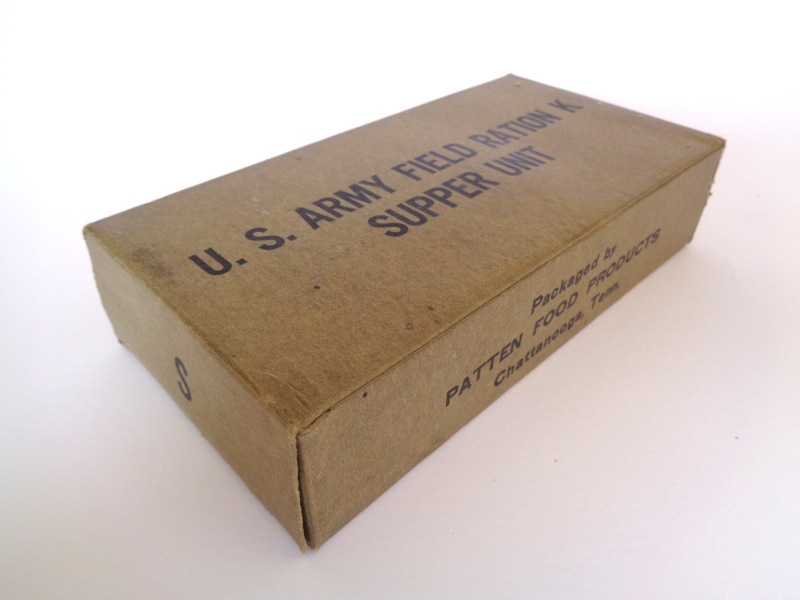
An outer carton printed with its nomenclature and unit printed on both main panels and on both side panels the packagers name. Both tuck-in end flaps have the "S" for Supper.
On one or both side panels is printed the company's name and address, who served as the prime contractor, that packed the food components into the carton. Sometimes this information was printed on the main panel in the lower right corner.
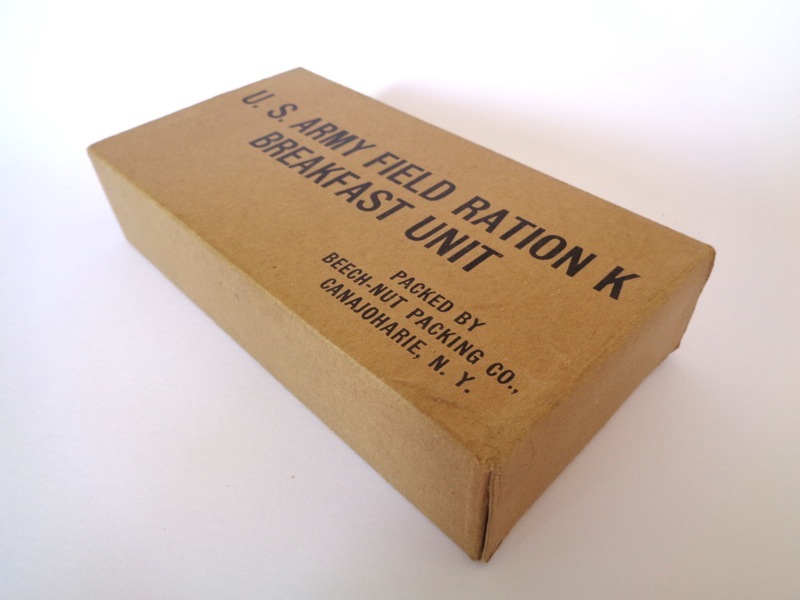
Outer carton that is only printed on its front panel. There are no side or end markings.
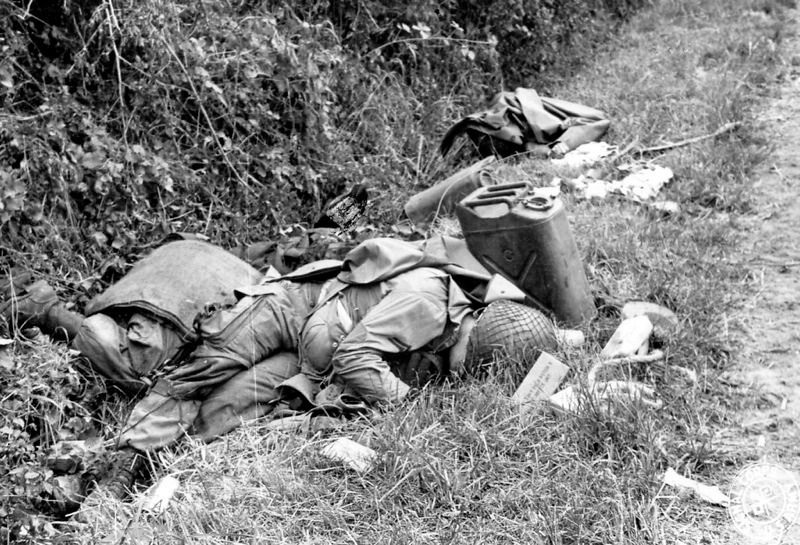
American casualties, paratroopers killed on D-Day, are lying in a ditch near St. Marie du Mont. Although gruesome, we can't help but noticing the early (type I) K Ration next to the troopers helmet.
Type II: Suggestions are added to the front panel of unit. Components are listed on the back. (February 1943)
Experience from field tests pointed out that the soldier had no knowledge of its contents, and how to use it, before actually opening it.
A proposal of including a sheet with a list of the contents and preperation instructions was not accepted since the soldier still would have to open the carton in advance in order to read the list.
In Februari 1943 (after the inclusion of a matchbook in the Dinner unit) it was decided that one main panel, in addition to the name of the ration and unit, the following suggestions were added:"Open inner [cellophane] bag carefully, it may be used as a waterproof container for matches, cigarettes, etc." and "For security, do not discard the empty can, paper or refuse where it can be seen from the air. If possible, cover with dirt, foliage, sand, etc."

The instructions on a Supper unit packaged by the Hills Brothers.
The back panel was printed with a list of its contents and suggestions for preparation.
All the outer cartons of the Breakfast units lists only "Ham & Eggs". The canned product, however, can be either Ham & Eggs or the canned Pork & Egg Yolk. It also states that cheese could be substituted for the Egg product. This was done just in case the egg product was not obtainable.
The Cheese product could be any of the cheese varieties developed.
The Supper unit list "Can Meat" for the canned product, this could be any of the meat varieties available. Again, cheese could be substituted as well.
So far all K Rations I have seen contained their respective Egg, Cheese or Meat product. Apparently the companies were capable of producing the quantities needed.
Later the colored "morale" cartons use the more generic "Meat & Eggs" for the Breakfast unit.
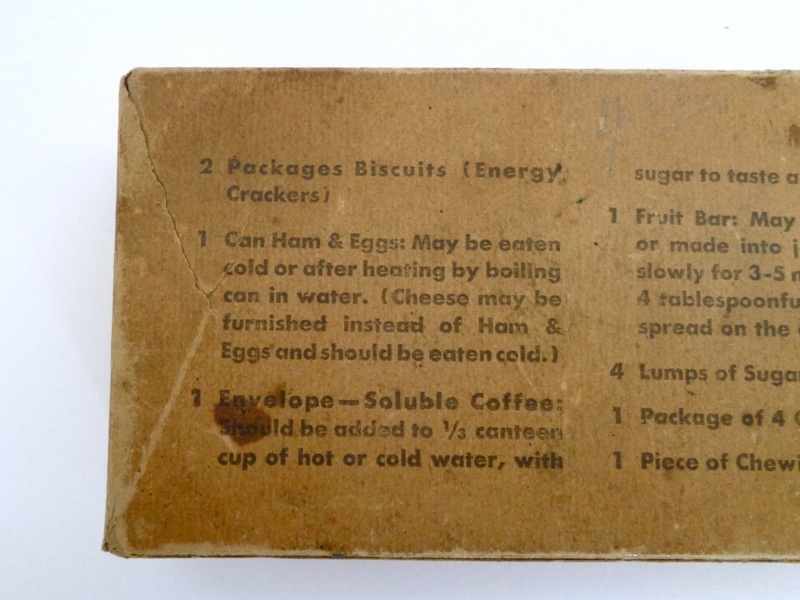
The back of a Breakfast unit listing Ham & Eggs. Note that cheese may be furnished. General Food Corporation, early 1944.
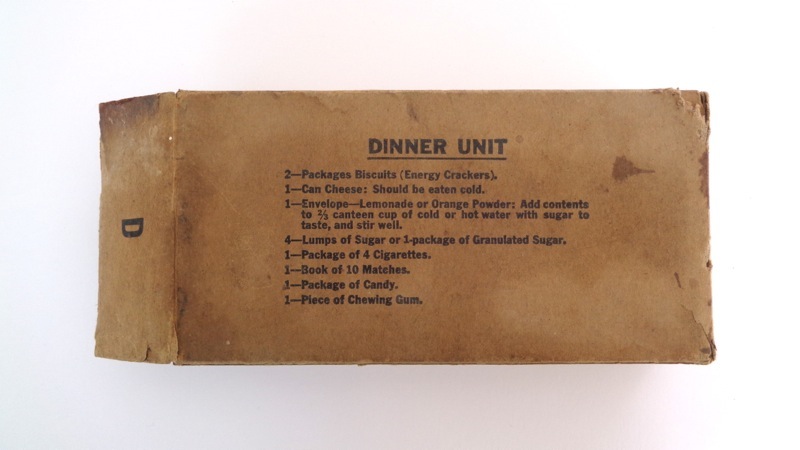
Back of a Dinner unit packaged by Patten Food Products (Mid 1943). Note that the sugar could be four tablets or one package of granulated sugar.
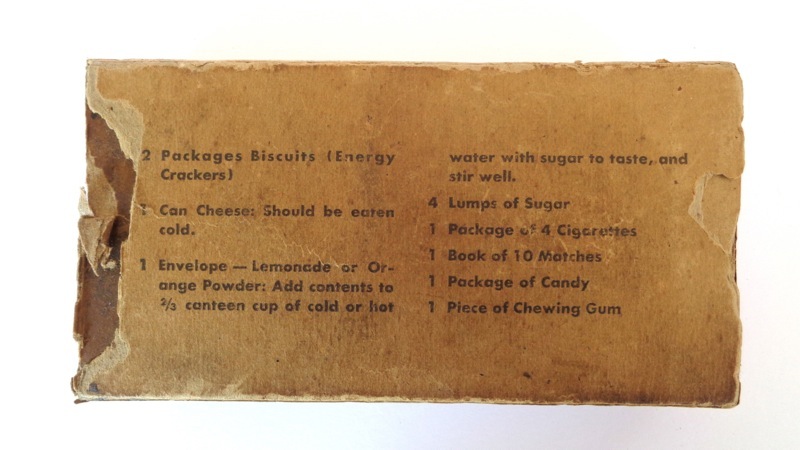
List of contents on a Dinner unit box. Note that there is either Lemonade or Orange Juice Powder in the unit. Although four lumps of sugar are mentioned, there was a package of 23 grams of granulated sugar in this particular unit instead. (Late 1943)
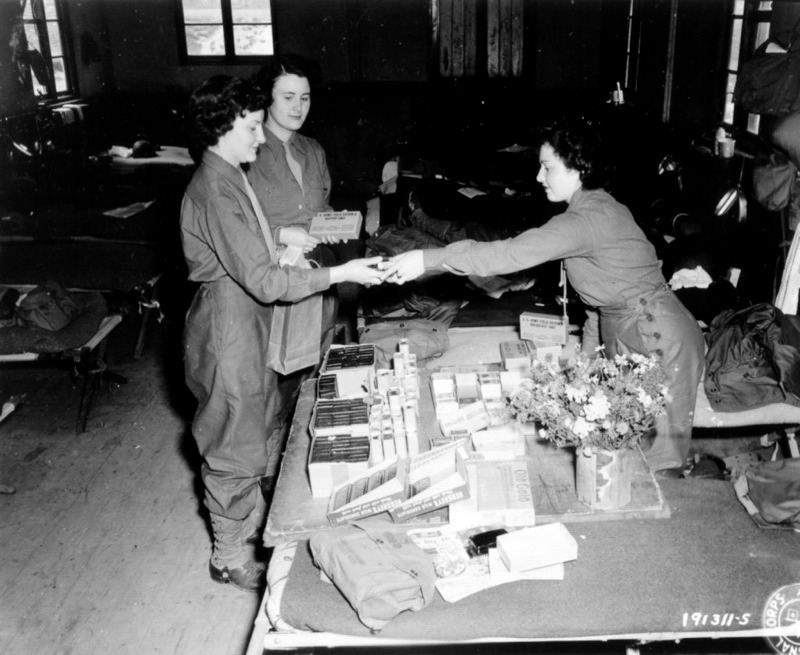
Nurses in England are getting K Rations and PX supplies for their trip across the channel to Normandy, 1944. They are recieveing the Type II version.
Type IIIa: Nomenclature is changed to "Ration, Type K". (May/June 1943)
In May/June 1943 the nomenclature of all U.S. Army rations were changed to "Ration, Type …". So the "U.S. Army Field Ration K" becomes the "Ration, Type K". Only the name of the ration changed on the carton, all the other information remained the same as before.
It should be mentioned here that I can't pinpoint the exact date of the change of the nomenclature. With the acceptance of the 5-in-1 Ration in March of 1943 there was an objection to the name "United States Army '5-in-1' Ration" and that it should be in the military traditional reversed order: Ration, Five-in-One. However, official specifications issued May 1, 1943 use the name "United States Army Ration: Five-in-One". With the acceptance of the new 10-in-1 Ration one month later (June 7, 1943) the nomenclature "Ration, Ten-in-One" is used.
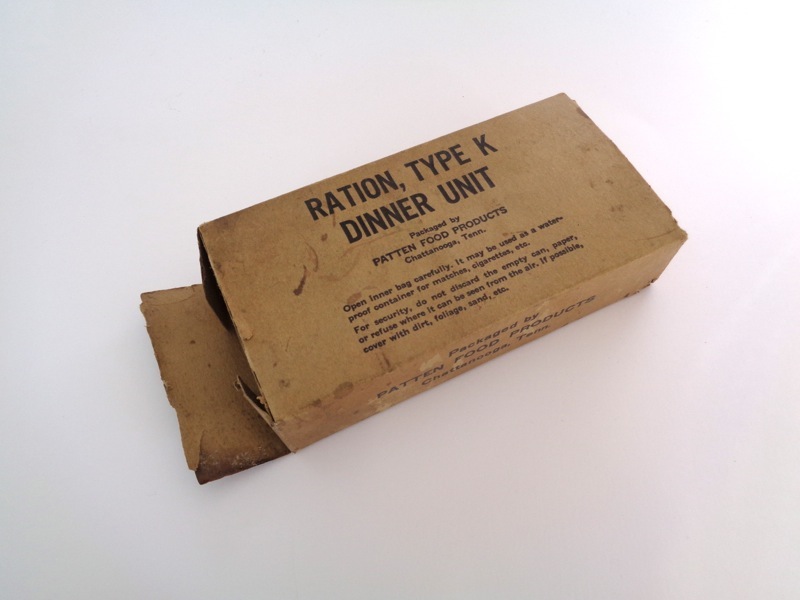
Ration, Type K. Made by the Patten Food Products (the same company that packaged the 23 grams granulated sugar cartons). The lay-out of the label was left to the packing company, as long it carried the essential information approved by the QMC.
Type IIIb: Malaria warning is added on a side panel. (February 1944)
In the fall of 1943 a request came from the Office of the Surgeon General for a malaria prevention warning to be placed on the K Ration outer carton. At first this was objected to, reasoning that malaria prevention was part of training. It was feared that when all kinds of warnings would show up on ration packagings, it could became too much that eventually nobody would bother to read.
In Februari of 1944, however, it was decided that the warning "NOTICE: mosquito bites cause malaria. If you are in a malaria zone, keep your shirt on and your sleeves rolled down. Use mosquito repellent when out of doors between sunset and sunrise." was to be printed on one of the side panels.
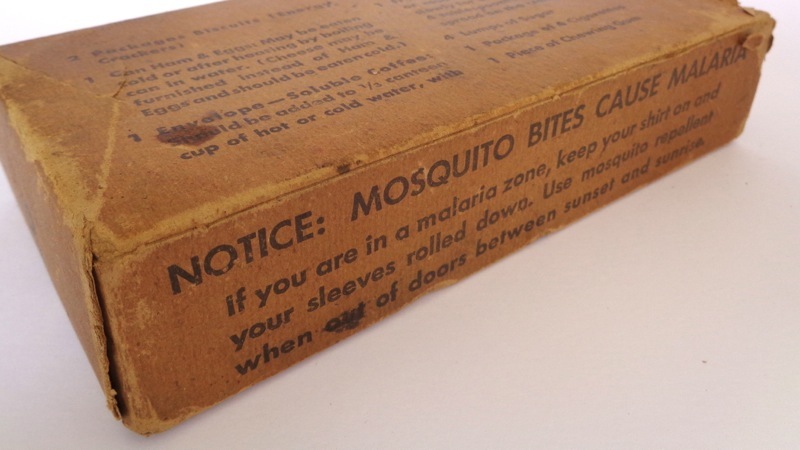
Just in case you haven't noticed...
Type IVa & IVb: The colored "morale" boxes are introduced. Components are the same as type IIIb, but are mentioned in a more generic list. (May 1944)
Late 1943 a new school of thought occured within the Army. Instead of providing the soldier with a ration that is packed unattractively and is therefore not very inviting, why not make it a little more attractive to the soldier by using an appealing design and color.
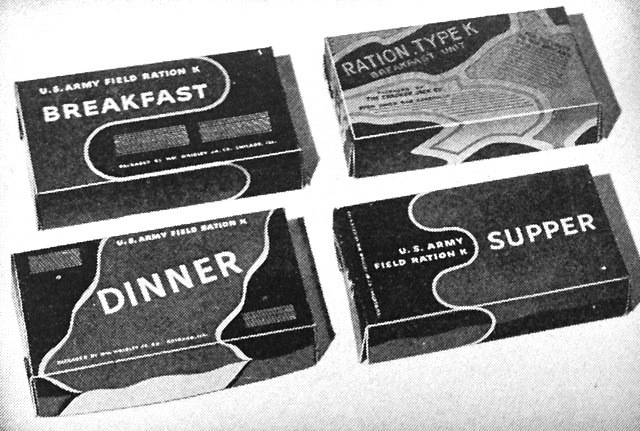
Four of several proposed multi-color designs.
Several multi-color designs were considered, but ultimately a one-color design for each meal was chosen. Each unit was printed with a different design in a color of low visibility. The use of different colors and designs facilitate not only distribution in the field, but also helps the packagers in the production plants to readily identify the units, there by speeding up the production process and prevents mixing units. It was determined that a color or a specific design was easier to recognize than to have to read every label to determine the correct package.
It was even suggested that the inside of the outer carton could be printed with board games, like checkers or dominoes. This idea was not acted upon, because it was felt that a frontline soldier would not have the time or inclination to play games in his foxhole.
Printing plates of the new design were prepared by the Lake Shore Electrotype Co. and provided through the Chicago office of the Quartermaster General to the carton manufacturers.
The Breakfast unit was printed with a striped design in brick red, the Dinner unit had a dark blue irregular "bubble" design, and the Supper unit was printed in a green design that featured straight lines, curves and stars.
Early 1944 the new designs were approved and went into production in May that same year. This version of the K Ration box is generally referred to as the "Morale" Boxes.
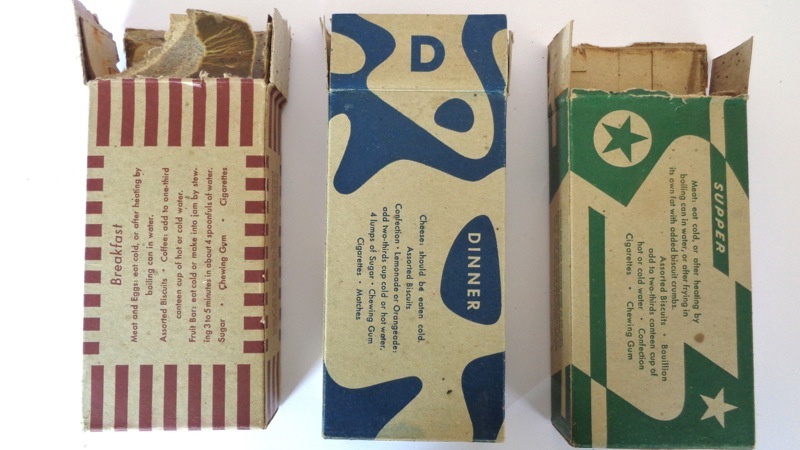
The new "Morale" Boxes.
"Not only are the three meals readily identified, but the drab monotony of one color type printing is relieved. The designs are bold, masculine, and impersonal. The colors have low visibility and use a minimum amount of ink. Outstanding packaging designers contributed generously to this project, and the treatment is an import advancement in Army Packaging policy."
This idea of making a field ration attractive through design turned out to be a failed experiment. The soldiers who used it still judged, and generally condemned, the ration by its contents, no matter how joyful the packaging is. This new approach to packaging was only tried with the K Ration. (And the Air Crew Lunch, but this was not a field ration.) While the idea was also suggested with the 10-in-1 Ration, this was not acted upon.

The USAAF Air Crew Lunch of a bright red and dark blue design. (photo: 1944Supply)
Another subtle change with the ration's outer carton is the gradual lowered quality of the cardboard used. While in 1942 only the highest quality of lined kraft paperboard was allowed, the quality detoriated from a cheaper chip kraft cardboard, to an even slightly thinner grey recycled cardboard in 1945.
The period a particular K Ration unit was produced can roughly be determined by its outer box design. Slight differences in design or contents list varied with each packer and specifications at the time of procurement.
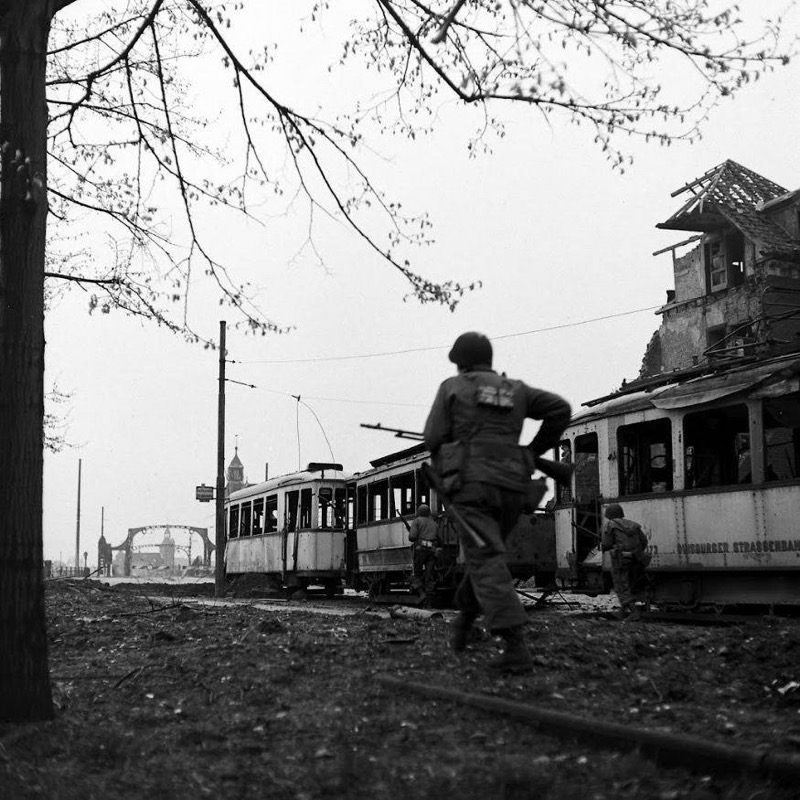
US infantrymen are seen here advancing through the streets of a German town in 1945. Note that the BARman has a Supper unit tied to his combat suspenders.
It was left to each packer how to close the outer carton. While the inner carton has two overlapping end flaps that were glued together prior to impregnation with molten wax, the closure of the outer carton could be either seal-flaps, like the inner carton, or tuck-in flaps. This is not a specific early or late feature, but depended on the packagers capability wether it had machines for glueing the flaps shut, or that the cartons had to be hand closed, using the tuck-end style.
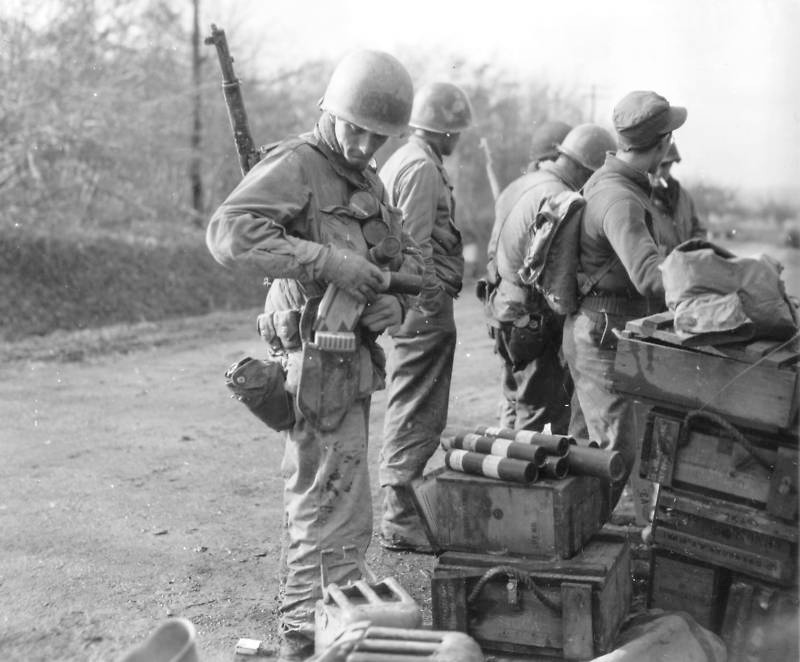
A GI is putting a Breakfast and a Supper unit in his shovel carrier before going into an assault in Germany, 1945.
Over time the carton grew slighly larger. Originally the outer carton was a snug fit over the inner carton. The hight of the inner carton was dictated by the hight of the 300 x 106 can. When the can was inserted into a protective sleeve, the height of the inner carton, and subsequently the outer carton, was increased.
As of September 1945 specifications for the outside dimensions of the outer carton is 3 20/32" wide, 1 20/32" high and 6 30/32" long.
Conclusion
Okay, so I came up with four different main types.
These are the distinctive changes in the outer cartons:
Type I: Only the nomenclature "U.S. Army Field Ration K" with type of unit is printed on the box. (late 1942 production)
Type II: Suggestions are added to the front panel of unit. Components are listed on the back. (February 1943)
Type IIIa: Nomenclature is changed to "Ration, Type K". (May/June 1943)
Type IIIb: Malaria warning is added on a side panel. (February 1944)
Type IVa: The colored "morale" boxes are introduced. Components are the same as type IIIb, but are mentioned in a more generic list. (May 1944)
Type IVb: Due to inclusion of a cereal bar and extra coffee, the components list is changed. (November 1944). Salt tablets were later added to the Dinner unit's list in 1945.
